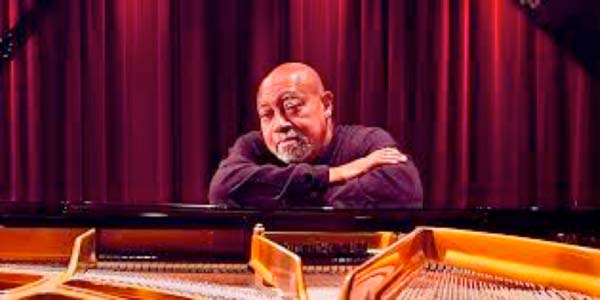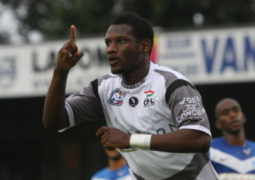
Back
in 2011, we were introduced to a new concept in jazz, called “Jazz and
Democracy”. It is an idea that tries to link the jazz idiom to the
understanding of democracy.
At
first glance, the concept seems a little far-fetched and somewhat ambitious,
but upon closer review, one could see the correlation between the two. Jazz and
democracy is a music integration curriculum linking the arts, (i.e. music) and
the humanities (history).
The
concept was developed in the United States by Wesley J. Watkins IV, PhD, also
known as Dr. Wes and is based on a hypothesis that Dr. Wes was investigating
since he was an undergraduate student.
The
goal is to inspire students to become active and offer positive contribution to
their communities. It is a music centered curriculum with genuine links to
other subject areas that can increase student identification with school,
impact academic engagement and have a subsequent effect on overall academic
success among those with an affinity for music. A good example of this is when
students create a rap to memorize their history lesson. This process becomes
engaging and effective while offering students a new approach to learning.
The
jazz and democracy project uses jazz as a symbol or metaphor to teach and
cultivate a good understanding of American democracy. When done properly, it
brings democracy to life, enriches the study of history and encourages youths
to become active and positive contributors to their communities.
It
uses literary, aural and visual content in addition to kinetic activity to
teach children about critical thinking, cooperation and peaceful negotiation.
It also enriches the core curriculum while providing arts education and fosters
jazz appreciation.
The
study of jazz and democracy provides students with the means to see hear and
experience concepts that are fundamental to democracy. It was spearheaded by Dr
Wes during the 2007-2008 academic years at the Thornhill Elementary School in
Oakland, California. Dr. Wes is an arts education activists who is also an avid
music lover, especially Latin jazz and jazz itself. He studied at Stanford
University and at The International Center for Research in Music Education,
University of Reading, England. He visited the Gambia a few years back with a
group of jazz musicians and gave lectures at select schools to introduce the
Jazz and Democracy concept and share his knowledge on jazz and promote jazz
appreciation.
Jazz
appreciation is done in many ways, but one of the most popular activities
associated with jazz appreciation is the staging of concerts and jazz
festivals.
The
Montreux Jazz Festival in Switzerland and the Newport Jazz Festival in Rhode
Island are well known for their history and attraction to jazz lovers
worldwide.
Another
festival that has become very popular and is indeed the most important jazz
festival in Africa is the Saint Louis Jazz Festival in Senegal. It became very
popular since the 1930’s and continues to draw huge audiences and participation
from notable personalities in the jazz world. It is held every year and has
become an important contributor to the tourism industry in Senegal.
Our
feature this week is on someone who was the main attraction at this festival in
2011. He is also a jazz educator and a practicing musician.
His
birth name is Kenneth Barron and he was born in Philadelphia, Pennsylvania on
June 9th 1943. He first came to wider recognition when he joined the Dizzy
Gillespie quartet in the 1960’s as a piano player. He studied and graduated in
Arts from Empire State College in New York City in 1978, but started playing
the piano at the age of twelve, and by the time he was fifteen years old, he
was playing with Mel Melvin’s rhythm and blues band.
As
time went on, he gained more experience while playing with drummer Philly Joe
Jones and saxophonist Jimmy Heath as well as multi-instrumentalist Yusef
Lateef. He has a distinguished career as a soloist and leader, and has also
served as one of the most dependable sidemen in all of post-bop mainstream
jazz.
Though
he was born in Philadelphia, his recording debut as an improvising artist took
place shortly after he moved to New York in 1961 and made the first of many
albums with his brother, saxophonist Bill Barron.
In
1962, Kenny would join trumpeter Dave Birons who was a member of James Moody’s
bop orchestra. It was through Birons that he met Moody who would later play an
important role in Barron’s career, hiring him to perform at the Village
Vanguard and taking him to join Dizzy Gillespie’s band.
Kenny
stayed with Moody and Gillespie until 1966 during which time they performed at
clubs and concerts throughout France and England.
In
1967, Kenny played with trumpeters Jimmy Owensand, Freddie Hubbard and
saxophonists Joe Henderson and Stanley Turrentine. In the 1970’s, he made a lot
of records with flute men James Moody and Yusef Lateef and bassist Ron Carter
and Buster Williams.
While
playing with all these musicians, Kenny would maintain a combination of freedom
and discipline and developed a stylistic range that continued to widen as he
went on to play with violinists Michal Urbaniak and John Blake, drummer Elvin
Jones and trombonist Ray Henderson.
In
the 1980’s, Kenny composed and played the sound track to Spike Lee’s movie “Do
the Right Thing”. He became a founding member of the band “Sphere” with Charlie
Ross, Buster Williams and Ben Riley all of them former associates of Thelonius
Monk.
Barron’s
history of collaborations and accomplishments span a period of fifty years and
paints a panoramic picture of his lifelong devotion to music. He is a respected
educator who has taught at Rutgers University, Julliard and Manhattan School of
Music.
He
continues to create music of exceptional quality and substantial depth using
that fundamental jazz instrument, the piano.
We
hope you enjoy reading this piece and that you find the correlation between
jazz and democracy fascinating.


